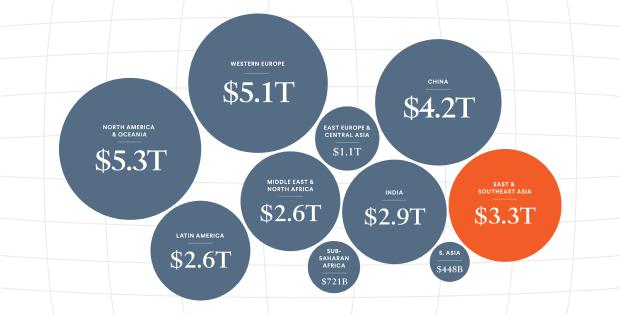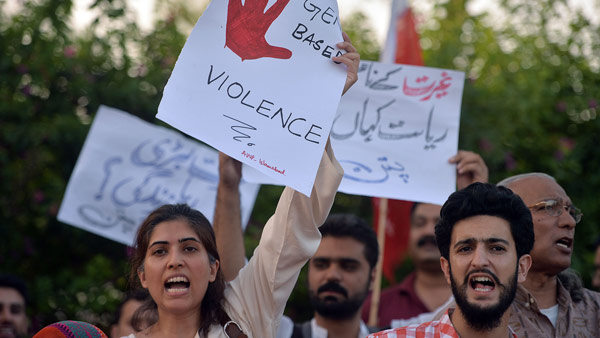Legal Barriers
1
Accessing Institutions
Limitations on women’s legal capacity weaken their decision-making ability. When women cannot independently decide where they want to go on a daily basis, travel, or live, they may face difficulty getting to work or conducting business transactions.
2
Building Credit
When women face constraints, including discrimination and limited credit history, in accessing credit, their ability to open formal bank accounts, build reputation collateral for loans, find employment, and start and grow businesses is impeded.
3
Getting a Job
Legal barriers that affect a woman’s ability to work, including gender-based job restrictions and the lack of workplace protections and leave benefits, inhibit her job prospects, earning potential, career growth, and ability to balance work and family.
4
Going to Court
Barriers in the justice system prevent women from advocating for their interests and enforcing the law. The cost of litigation can discourage poor women from accessing justice, and unequal treatment in court can undermine women’s legal capacities.
5
Protecting Women From Violence
Women can function more freely in societies and the business world when not faced with the threat of violence. Violence against women can undermine women’s careers, ability to work, access to financial resources, and the employment climate.
6
Providing Incentives to Work
Support for mothers—such as tax credits and the availability of childcare for young children—can reduce unequal burdens and provide incentives for women to enter and remain in the workforce, thereby increasing women’s labor force participation.
7
Using Property
Access to property benefits women entrepreneurs by increasing their financial security and providing them with the necessary collateral to start businesses. Legal differences in property ownership and inheritance rights can limit women’s economic prospects.
Moving Toward Reform
Governments around the world are beginning to understand the cost of inequality for women in the workplace, and to take action. Between 2015 and 2017, over 110 countries and territories carried out more than 180 reforms that improved women’s economic opportunities. Governments should also do more to implement existing laws and policies that provide for women’s equality.
110+
Countries
180+
Positive Reforms

Understanding the Economic Stakes
Closing the gender gap in the workforce could add a staggering $28 trillion to the global gross domestic product (GDP). Find out how women’s economic participation reduces poverty and boosts growth.
See the interactive reportProtecting Women From Violence
By the Numbers
123 countries do not legally prohibit sexual harassment in schools.
45 countries do not have laws on domestic violence.
Economic Effects
In countries where husbands can prohibit their wives from working or where the prevalence of violence against women is high, women are less likely to have formal bank accounts, savings, or credit.
Source: World Bank
Women are more likely to have majority ownership in firms in countries where workplace sexual harassment is legally prohibited.
Source: World Bank
Sexual harassment at work reduces women to sexual objects, which in turn reinforces gender stereotypes and undermines women’s authority and earning potential throughout their careers. A study of women who experienced sexual harassment at work in the United States found that the incidence of sexual harassment can significantly alter a woman’s career trajectory, stalling their wage growth and leading to substantial lost income.
Source: Gender & Society
The estimated costs of domestic violence range from 1.2 percent to 3.7 percent of GDP—equivalent to what many governments spend on primary education.
Source: World Bank

Country Example
Harassment in the workplace is pervasive in Pakistan, and women who pursue nontraditional careers face acute challenges and even violence. The case of law student Khadija Siddiqi illustrates the barriers for women in accessing traditionally male industries. Siddiqi was stabbed twenty-three times by a classmate, who was at first sentenced to seven years in prison but was later acquitted by a higher court. Siddiqi says the decision shows the overwhelming “stigma against women in the justice system.” Without basic protection from violence, women cannot fully participate in professional workplaces, Pakistani advocates say. “When women do speak up about harassment, our courts and law enforcement do not support them,” says activist Nighat Dad. “And then men say, ‘See, I told you, these spaces are not safe for you. You sit at home within the four walls of our house and then you are secure.’ If women speak up, they will lose the freedom and liberation of work.”
Source: Council on Foreign Relations
Policy Reform
When women are protected from violence, they are able to move more freely both in society and at work. Violence against women, on the other hand, undermines women’s economic participation. Countries should:
Enact legislation on domestic violence.
Prohibit sexual harassment in the workplace.
Forty-nine countries changed laws related to women’s protection from violence between 2015 and 2017.
No reforms were undertaken between 2015-2017 related to women’s workplace equality.
Increased gender parity
Neutral to gender parity
Decreased gender parity